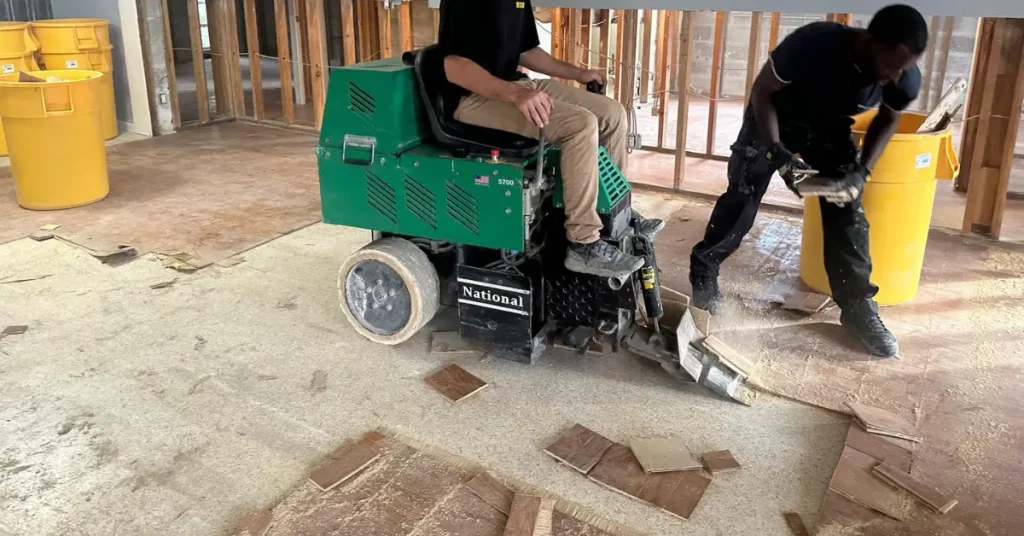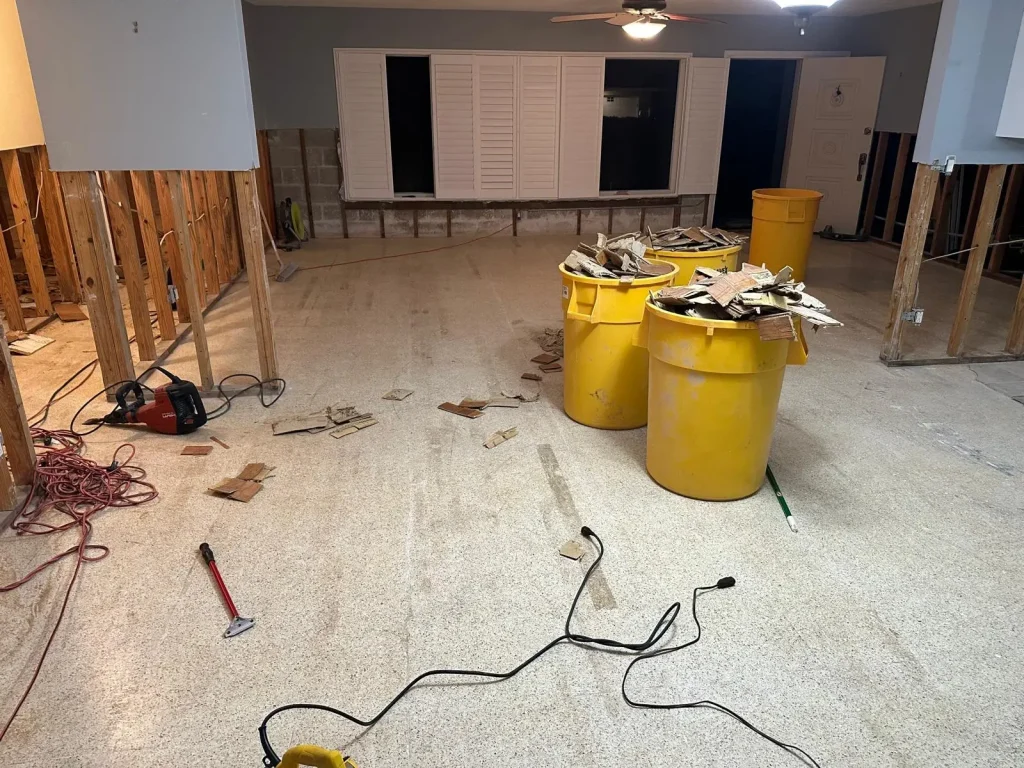
When water invades your home, it can wreak havoc on your home. Trust me, I’ve seen it all. Soggy carpets, warped hardwood, and crumbling tiles are just the beginning. Getting these damaged materials out is the first step to recovery. A proper flooring demolition job sets the stage for fresh, beautiful new surfaces. Let’s dive into what you need to know about removing those water-damaged things and starting fresh.
Understanding Water Damage Impact on Flooring Demolition Services
Water damage isn’t always obvious right away. Sometimes it hides beneath the surface, causing problems months later. When moisture seeps into your home, it can create mold, weaken structures, and ruin adhesives. This makes flooring demolition more complex than just ripping things up.
The longer water sits, the worse the damage gets. Quick action is key! Professional demo teams know how to spot hidden moisture issues that might not be visible to the untrained eye. They’ll make sure to remove all compromised materials so your new system have a solid foundation.

How Water Affects Tile, Hardwood, and Carpet
Different types react to water in unique ways. Carpet soaks it up like a sponge and quickly becomes a breeding ground for mold. The padding underneath is often the worst part, holding gallons of water against your subfloor.
Hardwood tends to cup, warp, or buckle when wet. Even after it seems dry, the wood might still contain moisture that will cause problems later. Tile might seem okay at first, but water can seep through grout lines and damage the substrate below. This often requires complete removal during the flooring demolition process.
The Complete Guide On Flooring Types
Knowing what type of floor you’re dealing with helps determine the best removal approach. Each material presents unique challenges during demolition:
- Ceramic tile requires special tools to break and scrape without damaging the subfloor
- Hardwood may need careful removal if parts can be salvaged
- Vinyl and laminate often come up in sheets but leave stubborn adhesive behind
- Carpet comes up easily but leaves tack strips that need separate removal
- Concrete requires heavy-duty equipment if it needs replacing
Most homes have multiple floor types throughout, which makes the demolition job more complex. A pro team brings all the right tools for each surface they’ll encounter.
Concrete requires heavy-duty equipment if it needs replacing
The right tools make flooring demolition go much faster. Pros don’t just show up with a crowbar and hope for the best! They bring specialized equipment designed for specific materials.
Power scrapers, demolition hammers, and industrial vacuums speed up the process dramatically. These tools also help protect the structure of your home during removal. DIY methods often cause unnecessary damage to the beneath or walls, creating bigger problems down the road.
Using Floor Scrapers for Adhesive and Old Flooring
One of the toughest parts is dealing with old adhesives. Those stubborn glues can seem impossible to remove! Professional scrapers make quick work of this challenging task.
The right scraper can strip away layers of old material without damaging what’s underneath. This saves hours of backbreaking work and ensures a clean surface for your new materials. Without proper adhesive removal, new materials won’t bond correctly, leading to failures later on.
Why Flooring Demolition Services Ensure Successful New Installation
Hiring pros for flooring demolition saves you time, protects your home, and creates the perfect foundation for new materials. They’ll remove everything down to a clean, level surface ready for whatever comes next.
Experts also handle disposal properly, which is a bigger job than most people realize. Water-damaged materials often can’t go in regular trash, and some might contain hazardous materials that require special handling. A professional service takes care of all this for you, making the whole process stress-free.
Remember, the quality of your demolition directly impacts how well your new floors perform. Cutting corners during removal almost always leads to problems with the new installation. When it comes to recovering from water damage, doing the demolition right the first time is always worth it!
FAQ On Flooring Demolition Services
What is the best way to remove flooring?
Rent professional equipment like power scrapers and pry bars. Start at one corner, work systematically across the room. Wear protective gear, including knee pads, gloves, and goggles. For best results, clear furniture completely and tackle one section at a time.
How do you remove glued down flooring?
Heat works wonders on stubborn adhesives! Use a heat gun to soften the material, then scrape with a wide-blade tool. For tougher spots, try adhesive removers or a mixture of warm water and vinegar. Let it soak before attempting removal.
How hard is it to remove tile floors?
Tile removal ranks among the most labor-intensive home projects. Breaking the first few pieces is challenging. Once you establish a pattern, progress improves. Expect dust, noise, and sore muscles. The substructure condition beneath determines overall difficulty.




